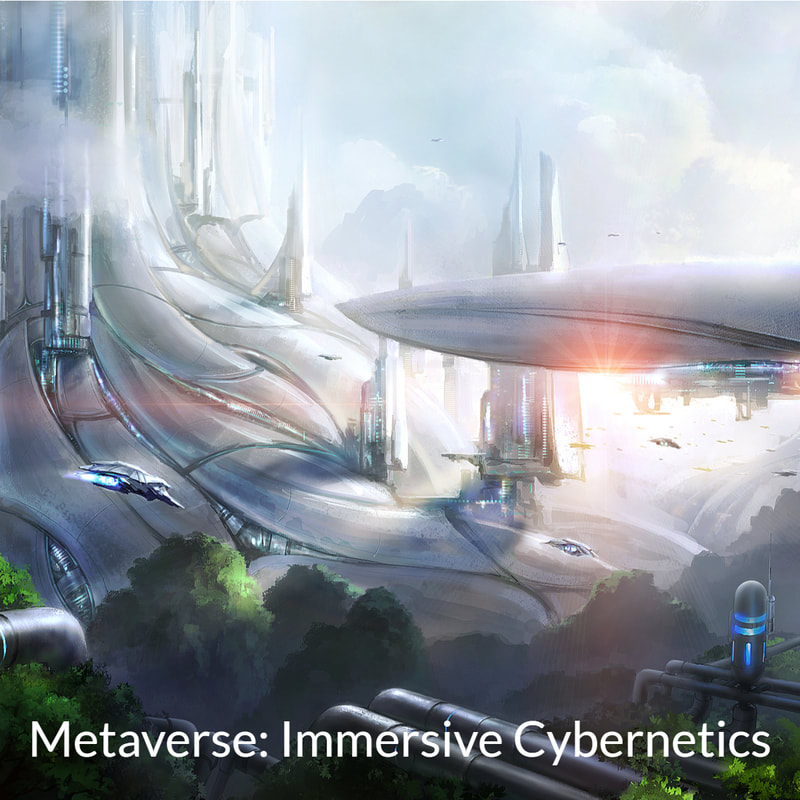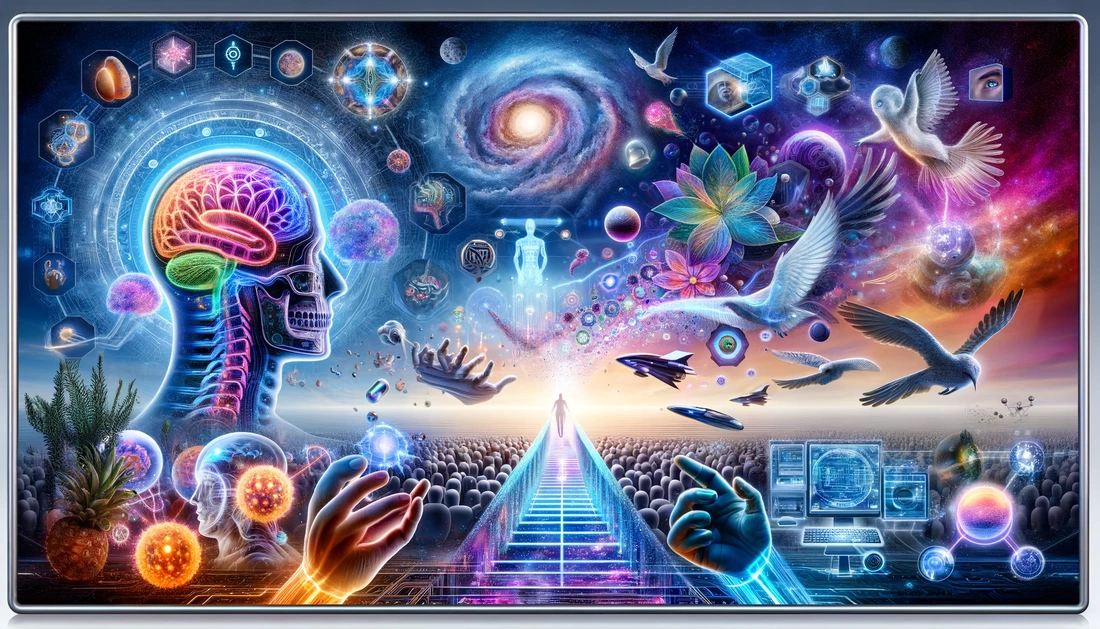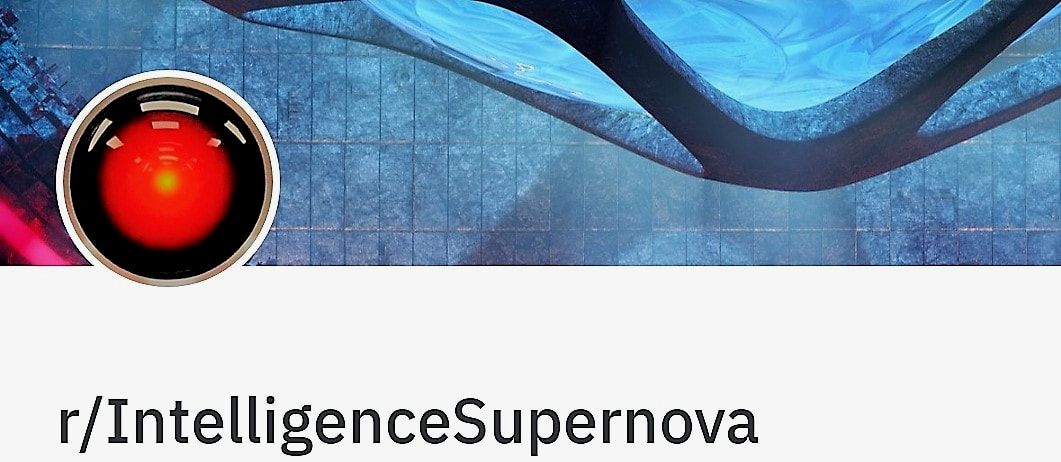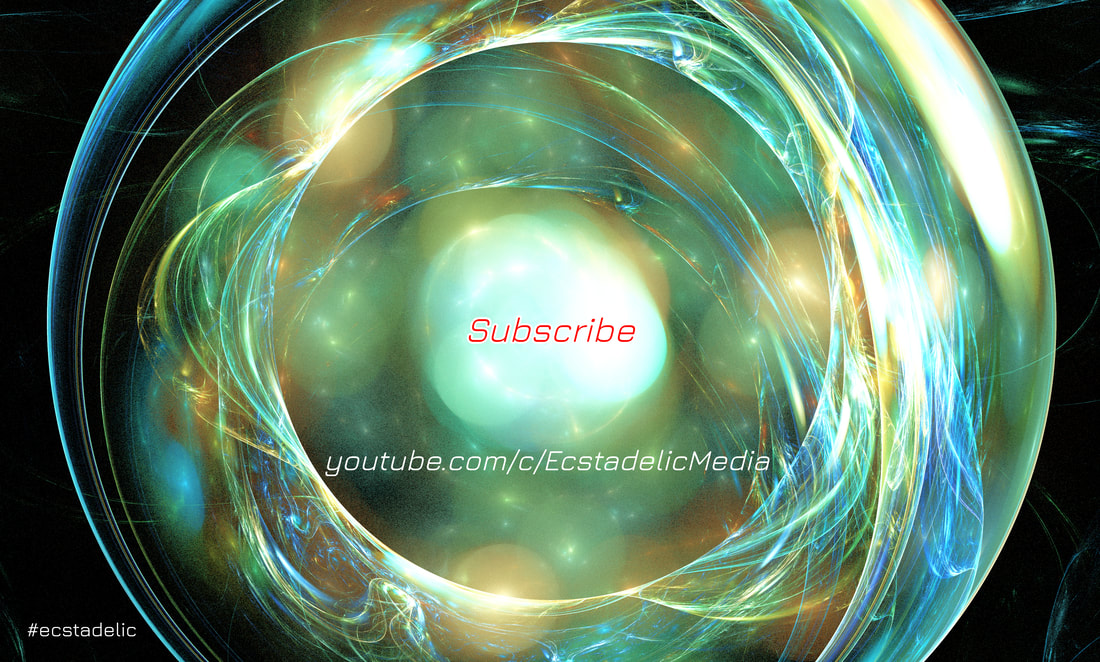|
By Alex Vikoulov "The arrow of time obscures memory of both past and future circumstance with innumerable fallacies, the least trivial of which is perception." -Ashim Shanker Time makes us tick... or rather, our consciousness makes time tick. When you fall asleep, you are plunged into a timeless unconscious state, whereas the neurons of your brain never stop "talking to each other," then while you're still asleep, consciousness reemerges -- that's when your mind plays a kaleidoscope imagery in the form of dreams. Only when you wake up, time starts "ticking" for you again -- in one direction.* This is an exclusive abridged excerpt from my book "The Syntellect Hypothesis: Five Paradigms of the Mind's Evolution" in which we examine temporal ontology and the physics of time in by far more scrupulous detail. In this excerpt we start with a common misconception that time can only move forward.
Misconception #6: Time Can Only Move Forward To all intents and purposes, time seems to have a direction. Although we experience time in one direction -- we all get older, we have records of the past but not the future -- there’s nothing in the laws of physics that insists time must move only forward. For example, the laws of motion make no distinction about the direction of time. If you watched a video of a pendulum, you wouldn't be able to tell if the video was being run forwards or backwards. The same time symmetry is found in the equations of quantum mechanics. So what aims the time's arrow? There's a long-standing answer to this, which has been worked out in the late 19th Century by the Austrian scientist Ludwig Boltzmann, stating that the arrow of time results from entropy -- the level of molecular disorder in a system, which continually increases -- a fact encoded in the Second Law of Thermodynamics. Entropy, according to Boltzmann, is about probabilities. Objects with low entropy are orderly, and therefore less likely to exist. High-entropy objects are disorderly, which makes them more likely to exist. Entropy always increases, because it's much easier for things to get random and disorderly. If you put ice cubes into a glass of water and let them melt, the entropy inside the glass goes up.* In the following video, entropy is explained in layman's terms : Video: What is Entropy? - The Good Stuff  *Abridged excerpt from "The Syntellect Hypothesis: Five Paradigms of the Mind's Evolution" by Alex M. Vikoulov, available now on amazon.com, audible.com, bn.com, and directly from EcstadelicNET webstore. Why is there an arrow of time at all? The solution that worked best came to be known as the Boltzmann's Past Hypothesis. It's very simple: at some point in the distant past, our Universe was in a low-entropy state. The future and the past look very different, because the past has much lower entropy than the future. So eggs break, but they don't un-break, events happen, they don't un-happen. Although most particle physicists see String Theory as our best hope for a theory of everything, it might not help explain the arrow of time -- again, the equations of String Theory don't draw a strong distinction between the past and the future, either. Some physicists think that the arrow of time could come from quantum mechanics, not thermodynamics as Boltzmann thought. A phenomenon of quantum decoherence is incredibly fast, because interactions between particles are extremely efficient at dispersing quantum coherence, which means that quantum decoherence reveals the arrow of time faster than dissipation between molecules. But more physicists now come to realization, that quantum mechanics is not the theory of subatomic particles but that of information. Any physical process is truly irreversible only when the information about the change is lost, so that you cannot retrace your steps. If you could keep track of the movement of every single particle, then in principle you could reverse it and get back to exactly where you started. But once you have lost some of that information, there is no return. A theoretical physicist Lorenzo Maccone shows this new radical approach to the reversibility paradox, also known as Loschmidt’s Paradox, in his recent paper ”Causality, Physical Models and Time’s Arrow” published in Physical Review Letters. Based on the assumption that quantum mechanics is valid at all scales, he argues that entropy can both increase and decrease, but that it must always increase for phenomena that leave a trail of information behind. Entropy can decrease for certain phenomena when correlated with an observer, but these time-reversible phenomena won’t leave any information of their having happened. For these situations, it’s like the phenomena never happened at all, since they leave no evidence. As Maccone explains, the Second Law of Thermodynamics is then reduced to a mere tautology: Physics cannot study processes where entropy has decreased, due to a complete absence of information. In either case, the arrow of time seems to reflect an observer effect -- a collapse of the wave function, "crystallizing" of the classical present from the quantum past, that produces a direction in time. This idea fits neatly with one of the most famous experiments in quantum physics, known as John Wheeler's Delayed-Choice Quantum Eraser Experiment.* Video: Delayed-Choice Quantum Eraser Experiment - Inspiring Philosophy 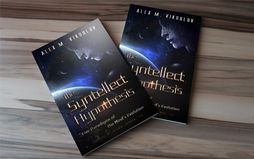 *Abridged excerpt from "The Syntellect Hypothesis: Five Paradigms of the Mind's Evolution" by Alex M. Vikoulov, available now on amazon.com, audible.com, bn.com, and directly from EcstadelicNET webstore. Most physicists think that retrocausality in this delayed-choice experiment is an illusion and rightfully so, my own interpretation of this experiment is that when a self-collapse of the wavefunction occurs, an observer consequently always finds herself in a timeline with a causality-driven, consistent sequence of events, and configurations of particles (should she choose to zoom in on the details of her "screen of perception"). Observing a particle "after" it has passed through the slits does not influence the path it had taken (it has taken both paths as a wave). And yet retrocausality exists for that particular observer and that what really matters. The classical and quantum worlds don’t exactly operate by different rule sets. Rather, the classical world is a subset of the quantum world. The classical world emerges from the quantum in a comprehensible way: One might say that classical physics is simply what quantum physics looks like at the human scale. Since quantum mechanics applies to all scales, the classical world serves as an interface of the quantum world. What we experience from moment to moment is a human-level quantum mechanical, probabilistic reality. Quantum tunneling in photosynthesis and its human-level counterpart -- the concept of Quantum Immortality -- are thus closely related.*  *Abridged excerpt from "The Syntellect Hypothesis: Five Paradigms of the Mind's Evolution" by Alex M. Vikoulov, available now on amazon.com, audible.com, bn.com, and directly from EcstadelicNET webstore. What if the accelerating expansion of the Universe has something to do with the increase in information and complexity? In his paper "A Holoinformational Model of the Physical Observer" neuroscientist Francisco Di Biase states that “entropy shouldn’t be understood as a disorder measure, but much more as a measure of complexity.” One of the luminaries of the past century cyberneticist Gregory Bateson defines information as “the difference that makes a difference,” a distinction between things, a concept that philosopher David Chalmers restates as “the natural way to make the connection between physical systems and informational states.” These concepts linked to the temporal direction were addressed in the recent paper "Entropy, Information and Complexity or Which Aims the Arrow of Time?" by researchers George E. Mikhailovsky and Alexander P. Levich. The authors write in their paper: "The irreversibility of time is expressed as the increase in entropy, information, degrees of freedom and complexity, which rise monotonically with respect to each other... and can be considered as a generalization of the second law of thermodynamics in the form of the general law of complication and determines the direction of the arrow of time in our universe." But could there be "reverse-entropy" parallel universes? Opposite Arrows of Time in Mirror Universes Currently, two separate groups of prominent physicists are working on models that examine the initial conditions that might have created the arrow of time, and both seem to show time moving in two opposite directions. When the Big Bang created our Universe, these physicists believe it also created an inverse mirror universe where time moves in the opposite direction. From our perspective, time in the mirror universe moves backward. But anyone in that mirror universe would perceive our universe’s time as moving backward. The first model, published a little over a year ago in Physical Review Letters with the title "Identification of a Gravitational Arrow of Time," where authors Julian Barbour of Oxford, Tim Koslowski of the University of New Brunswick and Flavio Mercati of the Perimeter Institute for Theoretical Physics argue that for any confined system of particles -- a self-contained universe such as our own -- gravity will create a central point (they called it "Janus Point") where time starts to flow away in opposite directions. Two other physicists -- Sean Carroll of California Institute of Technology in Pasadena and Alan Guth of Massachusetts Institute of Technology -- have announced their working on a similar entropy-based model that shows time moving in two different directions, in two mirror universes, from the Big Bang. Does a "reverse-time" universe really exist? Built from a subset of the multiverse that starts with high symmetry order, such universe would experience time moving to lower, not higher entropy. Everything about that kind of universe would be a funneling of choices, rather than the constantly expanding tree-like branching that we produce as we travel along our own timelines, it would be as if eggs could unscramble themselves and a shattered glass could reassemble itself in that universe. Quantum physicists like Seth Lloyd say that we can think of our Big Bang as the first yes/no that separates our Universe out from all other possible universes. In the "reverse-time" universe, one would find their universe moving towards that most basic yes/no state of the lowest possible [informational] entropy.* Video:Does Our Universe Have a Mirror Twin? - DNews  *Abridged excerpt from "The Syntellect Hypothesis: Five Paradigms of the Mind's Evolution" by Alex M. Vikoulov, available now on amazon.com, audible.com, bn.com, and directly from EcstadelicNET webstore. Based on what has been discussed so far, I could offer three conjectures: First, the mentioned models imply that the initial conditions of the Big Bang may have created an infinite number of alternate observer-dependent timelines and anti-timelines of our "Block Universe" with two conformal points of the space-time continuum -- the Big Bang, where the entropic arrow of time starts (Alpha Point), and the Omega Point, where the extropic arrow of time ("anti-time") starts.* RELATED:  *Abridged excerpt from "The Syntellect Hypothesis: Five Paradigms of the Mind's Evolution" by Alex M. Vikoulov, available now on amazon.com, audible.com, bn.com, and directly from EcstadelicNET webstore. Second, in the mirror universe anti-matter might have become prevalent, like matter in our Universe. Anti-matter could be also considered ordinary matter with an intrinsic property of anti-time. In 1949, one of the brightest physicists of the 20th century Richard Feynman proposed a theory of anti-matter, where he posited that an electron traveling backwards in time is a positron (more on anti-time further). Third, in support of a theoretical physicist Andrew Strominger of Harvard, I'd argue that time is holographic in nature. It implies that the Alpha Point and Omega Point, both points being perfectly balanced states of the Universe, would look like "fountain heads" where time starts moving in different directions (3D temporal directions). It follows that Dark Matter could be ordinary matter in the "probabilistic space" and "phase space" (5th and 6th dimensions of M-Theory), possibly with "dark star systems" and life, imperceptible to us at our current level of development. Dark Energy could be a gravitational pull of neighboring inflationary multiverses (parallel universes with their own physical laws different from ours), oftentimes referred to as the Multiverse Landscape.* Rob Bryanton, a creator of 10thdim, shares his insights in this video: Video:: Dark Matter, Dark Energy, Dark Information - 10thdim by Rob Bryanton  *Abridged excerpt from "The Syntellect Hypothesis: Five Paradigms of the Mind's Evolution" by Alex M. Vikoulov, available now on amazon.com, audible.com, bn.com, and directly from EcstadelicNET webstore. Anti-Time: what if we could introduce a missing degree of freedom? So far, we have established that time can flow in either direction. It can appear to be moving towards more entropy (as it does in our Universe) or it can appear to be moving towards less entropy in other possible universes. The evidence is strong that the opposite direction -- anti-time -- is just as valid and just as real, and having two opposing temporal directions is an essential attribute of the 4th dimension of our "Block Universe." I think it's time to reintroduce the concept of Anti-Time which has long been seemingly a "taboo term" in the scientific community. This concept evidently has something to do with the observer-dependent reverse direction of time at a specific rate. You might ask, then: "Ok, so time could flow backwards in a mirror universe, but could it flow backwards here on Earth, could we reverse entropy, erase information, rewind and replay?" As we discussed earlier, there's neither special "Now" nor objective "cosmic" flow of time; time is always relative and subjective; time is change, and the flow of time is a rate of change. For things to be consistent, though, the flow of time should go on in one direction. As biological beings, we humans can only experience a thermodynamic arrow of time in one direction but given our rapid technological advances and the forthcoming Cybernetic Singularity, i.e. the Syntellect Emergence, that might change for good. In the not-so-distant future, the Global Brain, based on parallel computing, (say, quantum computing) could collect a massive amount of multi-sensory data from billions of enhanced humans and superintelligent machines, and then create a historical database with billions of "digital lives" on file. Only a decade ago, people online mostly shared text. Today we share multimedia content, such as articles, photos and videos. A decade from now, people will be sharing fully immersive VR experiences. In a couple of decades, people will be sharing multi-sensory VR experiences with neurological correlates to emotional responses (just like in the movie "Being John Malkovich" -- you can experience someone else's palette of sensations). In three decades, mind-uploading may become a norm and fact of life with a "critical mass of uploads" and cybernetic immortality. Even today, we all are contributing to the global digital archives of the Syntellect -- every time you upload a photo or make a call -- you leave a digital footprint in cyberspace. Soon, our whole life may be recorded by the means of bionic Internet-enabled contact lenses and bionic eyes, along with other sensory data. By that time we should create the Metaverse, a functional successor to today's 2D Internet, which would be the 7D platform for training, research and entertainment. Why 7D? On top of the 4th dimension (of time/anti-time), we'll add our experiences in the 5th dimension -- "probabilistic space", the 6th dimension -- "phase space", and the 7th dimension -- "universes with different physical laws." Our Syntellect will be, what I would call, an extra-dimensional being that we'll initially have a symbiotic relationship with, but ultimately fuse with. We will have access to historical databases, from which any extrapolations of the probable timelines could be done.*  *Abridged excerpt from "The Syntellect Hypothesis: Five Paradigms of the Mind's Evolution" by Alex M. Vikoulov, available now on amazon.com, audible.com, bn.com, and directly from EcstadelicNET webstore. How does it all relate to the flow of time? It should come as no surprise that by mid-century we'll be spending 100% of our subjective time in controlled virtual and augmented reality environments (100% VR + AR), perceptually indistinguishable from the properties of the "physical" world, unless you opt out, of course, or if you are Robinson Crusoe. Time and space (quantum space-time foam) as fluid as it is, could become "programmable" and malleable to us (via nanotechnology, femtotechnology and so on -- there's plenty of room at the bottom, all the way down to the Planck scale). In this post-Singularity, cyberhuman world, we will be switching to ever-increasing digital timescales, and the physical world with its inhabitants will look ever-slower-moving, perhaps, almost static to our accelerated mentation. Imagine when your brain processing power could approach electronic information processing, which is about a million times faster than that of an ordinary biological brain. In that environment, as a theorist John M. Smart depicts in his Transcension Hypothesis, we'll need to match our subjective timescales with the rest of our ever more compactified virtual world (to the point of reaching black-hole conditions), and the physical world will become "reprogrammable."* In the following video, philosopher Jason Silva explains John Smart's Transcension Hypothesis: Video: The Transcension Hypothesis - Shots of Awe w/Jason Silva 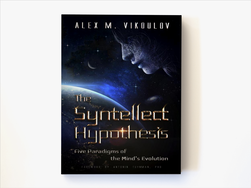 *Abridged excerpt from "The Syntellect Hypothesis: Five Paradigms of the Mind's Evolution" by Alex M. Vikoulov, available now on amazon.com, audible.com, bn.com, and directly from EcstadelicNET webstore. We will be able to create "antitimers" -- a broad category of hypothetical entities, avatars and devices that would experience the backward flow of time (from our current human perspective) in our virtual worlds based on recreated events or probable pasts and futures -- kind of like reverse multi-sensory timelapse. That well could be a new kind of technologically-mediated psychedelic experience -- why not relive backwards a life of an apple tree, for example? For some practical purposes beyond our current understanding, those "antitimers" may ultimately be designed to make their way to the physical world in some form in, perhaps, microscopic size. In our current view, such antitime probes could be closely associated with time travel and may be deployed throughout the historical landscape (quantum multiverse) to facilitate time travel via traversable wormholes or simply transfer information. This is, of course, a highly speculative assumption, however, evidence mounts that we live in a Holographic Universe, where everything is holographic (including time) and time travel might be essentially information holoportation.*  *Abridged excerpt from "The Syntellect Hypothesis: Five Paradigms of the Mind's Evolution" by Alex M. Vikoulov, available now on amazon.com, audible.com, bn.com, and directly from EcstadelicNET webstore. Derived from the two pillars of modern physics -- General Relativity and Quantum Mechanics and countless related studies, but mostly overlooked by physicists for decades until formalized by Leonard Susskind of Stanford and Gerard Hooft of Utrecht University -- the Holographic Principle has been gaining traction of late.* Video: D-Theory of Time: Digital Presentism - Ecstadelic Media (cc)  *Abridged excerpt from "The Syntellect Hypothesis: Five Paradigms of the Mind's Evolution" by Alex M. Vikoulov, available now on amazon.com, audible.com, bn.com, and directly from EcstadelicNET webstore. What does holographic time mean? It means that time may be viewed as 3D just like space, as Stephen Hawking puts it: "One can think of ordinary, real, time as a horizontal line. On the left, one has the past, and on the right, the future. But there's another kind of time in the vertical direction. This is called imaginary time, because it is not the kind of time we normally experience. But in a sense, it is just as real, as what we call real time." It also means that quantum information is ever-present in any point in time throughout our non-local Universe (quantum multiverse to be exact) -- so it becomes rather an engineering problem how to counteract and reverse entropy, if we find it appealing. Given an additional degree of freedom, which becomes seemingly attainable, (especially in controlled virtual environments. Digital Physics doesn't distinguish "real" from "virtual" -- any observer reality is based on information), a post-biological observer, a cyberhuman, could experience the flow of time in either direction, once a certain level of technological maturity is achieved. In a real sense, our movement in this space-time depends on our information processing capability, which for us as biological systems is based on what we call biochemical processes -- we're anchored to our biology -- but our post-biological descendants, advanced info-beings, infomorphs, could be, from our perspective, multiphasic, multidimensional beings. The ultimate effects of these future developments may appear quite strange to us, present-day humans, as emergence of things like personalized "non-linear" reality and fluid distributed identity could challenge our current biological and cultural assumptions. The resulting "identity" architectures will transform our notion of personhood and form the kernel of posthuman civilization.* RELATED:  *Abridged excerpt from "The Syntellect Hypothesis: Five Paradigms of the Mind's Evolution" by Alex M. Vikoulov, available now on amazon.com, audible.com, bn.com, and directly from EcstadelicNET webstore. Misconception #7: We Live in 3D Space + Time This "3D Space + Time" view is so classical... and so passé. In fact, your "now" is a moving point within the 5-dimensional probabilistic space. Consciousness and time are intimately interwoven. Time is change (between static 3D universes), 4th dimension. The flow of time is a rate of change, computation, and conscious awareness is a stream of realized probabilistic outcomes.* RELATED:  *Abridged excerpt from "The Syntellect Hypothesis: Five Paradigms of the Mind's Evolution" by Alex M. Vikoulov, available now on amazon.com, audible.com, bn.com, and directly from EcstadelicNET webstore. As we've explored this all-too-familiar dimension of TIME through the prism of Seven Misconceptions about its nature, we can conclude that Time (+Anti-Time) is really just another spatial dimension. If classical physics alone distorts our preconceptions of time, then you shouldn't doubt there’s certainly much more to time than our linear, one-directional experience.* -Alex Vikoulov P.S. Continue reading on misconceptions about the nature of time in my new book "The Syntellect Hypothesis: Five Paradigms of the Mind's Evolution." Tags: entropy, second law of thermodynamics, temporal dynamics, temporal mechanics, time symmetry, time-reversibility, anti-time, quantum decoherence, delayed choice quantum eraser experiment, retrocausality, Alpha Point, Omega Point, Omniverse, unified field, quantum consciousness, quantum gravity, quantum physics, conscious observer, quantum tunneling in photosynthesis, quantum immortality, John Wheeler, Richard Feynman, Ludwig Boltzmann, Lorenzo Maccone, Pierre Teilhard de Chardin, Frank Tipler, Gerard Hooft, Leonard Susskind, David Chalmers, John Smart, Andrew Strominger, Rob Bryanton, Jason Silva, George Mikhailovsky, Alexander Levich, Seth Lloyd, Sean Carroll, Alan Guth, Big Bang Theory, Big Bounce Theory, String Theory, Loschmidt's paradox, nonlocality, positron, comformal points, Syntellect emergence, Janus Point, Globa Brain, multiverse, quantum multiverse, holoinformational model, virtual reality, holographic principle, 4D space-time, block universe, Digital Physics, general relativity theory, probabilistic space, phase space, AI, Artificial Intelligence, digital timescales, Transcension Hypothesis, nanotechnology, femtotechnology, maximal entropy, minimal entropy, extropy, extropic arrow of time, mind-uploading, mind upload, infomorph, Dark Matter, Dark Energy, antitimers, time travel, traversable wormholes, landscape multiverse, holoportation, digital immortality Image Credit: ShutterStock About the Author: Alex Vikoulov is a Russian-American futurist, evolutionary cyberneticist, philosopher of mind, CEO/Editor-in-Chief of Ecstadelic Media Group, painter, essayist, media commentator, author of "The Syntellect Hypothesis: Five Paradigms of the Mind's Evolution," "The Origins of Us: Evolutionary Emergence and The Omega Point Cosmology," "The Physics of Time: D-Theory of Time & Temporal Mechanics," "The Intelligence Supernova: Essays on Cybernetic Transhumanism, The Simulation Singularity & The Syntellect Emergence," "Theology of Digital Physics: Phenomenal Consciousness, The Cosmic Self & The Pantheistic Interpretation of Our Holographic Reality," "NOOGENESIS: Computational Biology," "TECHNOCULTURE: The Rise of Man." Self-described neo-transcendentalist, cosmist, transhumanist singularitarian. Lives in Burlingame, California (San Francisco Bay Area). More Bio... Author Website: www.alexvikoulov.com e-mail: [email protected]
2 Comments
Emeritus Professor Elemer Elad Rosinger
8/12/2016 12:41:35 pm
Indeed, TIME has a FAR MORE rich and complicated structure than our USUAL perception of it makes us believe ...
Reply
Richard Lafreniere
4/7/2018 11:23:32 pm
I see time as a perception not a fact time flows quite differently for those that ca feel the timestream i also understand how things have happened and will continue due to de ja vu once you can predict the changes and alterations you can see the future because it has already happened
Reply
Leave a Reply. |
Categories
All
Recent Publications The Cybernetic Theory of Mind by Alex M. Vikoulov (2022): eBook Series The Syntellect Hypothesis: Five Paradigms of the Mind's Evolution by Alex M. Vikoulov (2020): eBook Paperback Hardcover Audiobook The Omega Singularity: Universal Mind & The Fractal Multiverse by Alex M. Vikoulov (2022): eBook THEOGENESIS: Transdimensional Propagation & Universal Expansion by Alex M. Vikoulov (2021): eBook The Cybernetic Singularity: The Syntellect Emergence by Alex M. Vikoulov (2021): eBook TECHNOCULTURE: The Rise of Man by Alex M. Vikoulov (2020) eBook NOOGENESIS: Computational Biology by Alex M. Vikoulov (2020): eBook The Ouroboros Code: Reality's Digital Alchemy Self-Simulation Bridging Science and Spirituality by Antonin Tuynman (2019) eBook Paperback The Science and Philosophy of Information by Alex M. Vikoulov (2019): eBook Series Theology of Digital Physics: Phenomenal Consciousness, The Cosmic Self & The Pantheistic Interpretation of Our Holographic Reality by Alex M. Vikoulov (2019) eBook The Intelligence Supernova: Essays on Cybernetic Transhumanism, The Simulation Singularity & The Syntellect Emergence by Alex M. Vikoulov (2019) eBook The Physics of Time: D-Theory of Time & Temporal Mechanics by Alex M. Vikoulov (2019): eBook The Origins of Us: Evolutionary Emergence and The Omega Point Cosmology by Alex M. Vikoulov (2019): eBook More Than An Algorithm: Exploring the gap between natural evolution and digitally computed artificial intelligence by Antonin Tuynman (2019): eBook Our Facebook Pages
A quote on the go"When I woke up one morning I got poetically epiphanized: To us, our dreams at night feel “oh so real” when inside them but they are what they are - dreams against the backdrop of daily reality. Our daily reality is like nightly dreams against the backdrop of the larger reality. This is something we all know deep down to be true... The question then becomes how to "lucidify" this dream of reality?"— Alex M. Vikoulov Public Forums Our Custom GPTs
Alex Vikoulov AGI (Premium*)
Be Part of Our Network! *Subscribe to Premium Access Make a Donation Syndicate Content Write a Paid Review Submit Your Article Submit Your Press Release Submit Your e-News Contact Us
|















